Some days ago, Flavien Menu from N-D-L-R published a long post including many images and the introductory text of the “Mnemosyne Atlas” by art historian Aby Warburg (a work left unfinished in 1929).
The Mnemosyne Atlas is a figurative atlas consisting of a series of plates. Each plate is made up of a montage of works of art from the Renaissance, from the antiquity (artworks, playing cards, archeological finds…) and from the 20th Century (newspapers, stamps…).
The Bilderatlas uses thousands of images inasmuch they can provide an immediate way of “speaking the world”, of vehiculating, through their primordial energy and evocaton, cultural tradition and social memory. The images are put in relation so as to weave several themes around a core element, and inducing the beholder to an interpretative process: “the word to the image” (zum Bild das Wort). In this sense the Atlas works as a machine that illustrates the mechanisms of tradition, themes and figures from the past to today. The entire range of emotional stirrings (aggression, defence, sacrifice, mourning, melancholia, ecstasy, triumph, etc.) is expressed through the revival of movements, gestures and postures, that is the Pathosformeln – expressive formulas of emotion that are either taken directly from ancient models, or reappearing as mnemonic traces (Engram) in successive works.
The Atlas was left unfinished due to Warburg’s death. The “Daedalus Version” (the first published edition of the “Letzte version” of 63 plates) sunk to oblivion and has been only recently rediscovered, with the work of philosophers and art historians such as Georges Didi-Huberman (whose exhibition “Atlas – How to Carry the World on One’s Back” is a direct heir of Warburg’s plates) or the online “Rivista di Engramma“, that organised an exhibition of the Mnemosyne Atlas in Venice in 2004 (and that is the principal source of this description). See the online reproductions here.
Flavien Menu gently gave us the possibility to reproduce here this content, for the sake of archival and diffusion. We just replaced the French translation of the introduction (The Absorption of the Expressive Values of the Past) with its English translation by Matthew Rampley. (Originally: “Einleitung,” written in German c. 1926–9. First published in Der Bilderatlas Mnemosyne (Berlin: Akademie Verlag, 2000) (a second edition published in 2003).)




The Absorption of the Expressive Values of the Past
Aby Warburg
Abstract:
From the “Introduction” by Matthew Rampley:
This key text offers the most extensive outline of Aby Warburg’s speculations about social memory, the origin of artistic expression and the psychological energies driving the history of European culture from classical antiquity onwards. According to Warburg, the conficting responses to the legacy of classical antiquity directly informed the styles of the visual arts, from the realism of Netherlandish art to the heroic forms of the Italian Renaissance. Warburg’s theory of culture engages with Nietzsche’s ideas on classical antiquity, its legacy and the meaning of the Dionysus–Apollo duality.
The conscious creation of distance between oneself and the external world can probably be designated as the founding act of human civilization. When this interval becomes the basis of artistic production, the conditions have been fulflled for this consciousness of distance to achieve an enduring social function which, in its rhythmical change be- tween absorption in its object or detached restraint, signifes the oscil- lation between a cosmology of images and one of signs; its adequacy or failure as an instrument of mental orientation signifes the fate of human culture. In a peculiar way recollection, both collective and individual, comes to the assistance of the artist oscillating between the religious and the mathematical world view. Although it does not create intellectual space unqualifedly, it does nevertheless strengthen the tendency either to tranquil contemplation or to orgiastic devotion, which comprise the extreme psychological poles of behavior. It establishes the lasting legacy of memory, yet not as part of a primarily protective tendency. Rather, the full force of the passionate and fearful religious personality, in the grip of the mystery of faith, intervenes in the formation of artistic style, just as, conversely, science, with its practice of recording, preserves and passes on the rhythmical structure whereby the monsters of the imagi- nation guide one’s life and determine the future. Those seeking to understand the critical stages of this process have not yet made fullest use of the way recognition of the polarities of artistic production, of the formative oscillation between inward-looking fantasy and outward- looking rationality, can assist possible interpretations of documents of the formation of the image. Between the imagination’s act of grasping and the conceptual act of observing, there is the tactile encounter with the object, subsequently refected in sculpture or painting, which we term the artistic act. This duality between an anti-chaotic function, which can be termed thus because the artwork selects and clarifes the contours of the object, and the demand that the beholder should gaze in cultic devotion at the idol that has been created, creates the human intellectual predicaments that should form the proper object of a scientifc study of culture that takes as its subject the illustrated psychological history of the interval between impulse and rational action. The pro- cess of de-demonizing the inherited mass of impressions, created in fear, that encompasses the entire range of emotional gesture, from helpless melancholy to murderous cannibalism, also lends the mark of uncanny experience to the dynamics of human movement in the stages that lie in between these extremes of orgiastic seizure—states such as fghting, walking, running, dancing, grasping—which the educated individual of the Renaissance, brought up in the medieval discipline of the Church, regarded as forbidden territory, where only the godless were permitted to run riot, freely indulging their passions. Through its images the Mnemosyne Atlas intends to illustrate this process, which one could defne as the attempt to absorb pre-coined expressive values by means of the representation of life in motion.
On the basis of its images it [the Mnemosyne] is intended to be frst of all an inventory of pre-coined classical forms that impacted upon the stylistic development of the representation of life in motion in the age of the Renaissance.
Such a comparative analysis has had to restrict itself to the examination of the complete oeuvre of a few principal artistic types, especially because there is a lack of systematic general preliminary works in this feld. Instead it has had to attempt a more deeply penetrating examination of social psychology, in order to grasp the sense of these expressive values preserved in the memory as a meaningful function of the intellect.
As early as 1905 the author was helped in such efforts by Osthoff’s writing on the nature of the superlative in the Indo-Germanic language: in brief he demonstrated that a change in the word root can occur in the comparison of adjectives and conjugation of verbs. Not only does the conception of the energetic identity of the intended attribute or action not suffer, even though the formal identity of the basic lexical expres- sion has fallen away; rather, the arrival of an alien root achieves an intensifcation of the original meaning.
A similar process can be ascertained, mutatis mutandis, in the area of the language of gesture in art when, for example, the dancing Salome from the Bible appears as a Greek maenad, or when a female servant carrying a basket of fruit in Ghirlandaio rushes by in quite conscious imitation of the Victory of a Roman triumphal arch.
It is in the area of mass orgiastic seizure that one should seek the mint that stamps the expressive forms of extreme inner possession on the memory with such intensity—inasmuch as it can be expressed through gesture—that these engrams of affective experience survive in the form of a heritage preserved in the memory. They serve as models that shape the outline drawn by the artist’s hand, once the extreme values of the language of gesture appear in the daylight through the formative medium of the artist’s hand.
Hedonistic aesthetes win the cheap approval of the art-loving public when they explain such formal changes in terms of pleasure in the extended decorative line. Let anyone who wishes content themselves with the fora of the most beautiful and aromatic plants; this will never, however, develop into a physiology of the circulating, rising sap of plants, for this only reveals itself to whoever examines the subterranean roots of life.
Prefgured in the sculpture of antiquity, the triumph of existence, in all its shattering contradictoriness between the affrmation of life and the denial of the self, confronted the souls of later generations, who saw it in the form of Dionysus in the orgiastic whirlwind of his followers on pagan sarcophagi, or of the triumphal procession of the Emperor on the Triumphal Arches of the Romans.
In both there are symbols of the mass movement of followers of a ruler; but whereas the maenad brandishes the goat, torn apart in madness, in honor of the god of intoxication, the Roman legionaries deliver up to Caesar the decapitated heads of barbarians like the tribute due to an ordered state (just as on the reliefs the Emperor is celebrated as the representative of imperial welfare for his veterans).
Indeed, the Colosseum, just a few steps away from the Arch of Constantine, grimly reminds the Roman of the Middle Ages and the Re- naissance that the primal impulse to sacrifce humans had imposed its cult site on pagan Rome, and even up to the present Rome continues to present the uncanny duality of martyrs and the victory laurel of the Emperor.
Medieval church discipline, which had experienced a merciless enemy in the form of the deifcation of the Emperor, would have destroyed a monument like the Arch of Constantine, had it not been possible to pre- serve the heroic acts of the Emperor Trajan, supported by reliefs added later, under the mantle of Constantine.
Even the Church had managed to lend the self-glorifcation of the Trajan relief Christian sentiment, by means of a legend that was still alive in Dante. The famous story of the pietà of the Emperor towards a widow who was pleading for justice is probably the subtlest attempt at transforming imperial pathos into Christian piety, through the energetic inversion of its meaning; the Emperor, bursting out of the inner relief, becomes an advocate of justice, and bids his followers halt, because the widow’s child has fallen under the hoofs of a Roman rider.
To characterize the restoration of antiquity as a result of the recent appearance of a factual consciousness of history and carefree artistic empathy, remains an inadequate descriptive evolutionary theory, un- less one is at the same time prepared to descend into the deep human spiritual compulsion to become enmeshed in the timeless strata of the material. Only then does one reach the mint that coins the expressive values of pagan emotion stemming from primal orgiastic experience: thiasotic tragedy.
Since Nietzsche’s time it has no longer been necessary to adopt a revolutionary attitude in order to view the character of antiquity through the symbol of the double-headed herm of Apollo–Dionysus. On the contrary, when looking at pagan art, the superfcial daily use of this theory of opposites makes it diffcult to take seriously the role of sophrosyne and ecstasy as a single, organic functional polarity that marks the limit values of the human will to expression.
The unhindered release of expressive bodily movement, especially as it occurred amongst the followers of the gods of intoxication in Asia Minor, encompasses the entire range of dynamic expressions of the life of a humanity shaken by fear, from helpless melancholy to murderous frenzy, and in all mimetic actions, which lie somewhere in the middle, as in the thiasotic cult, it is possible to detect the faint echo of such abyssal devotion in the artistic depiction of the actions of walking, running, dancing, grasping, fetching, or carrying. The thiasotic hallmark is an absolutely essential and uncanny characteristic of these expressive values as they spoke to the eye of the Renaissance artist from the sarcophagi of antiquity.
The Italian Renaissance sought now to absorb this inherited mass of engrams in a peculiar, twofold manner. On the one hand it offered wel- come encouragement for the newly liberated spirit of worldliness, and gave courage to the individual, struggling to maintain their personal freedom in the face of destiny, to speak the unspeakable.
However, to the extent that this encouragement proceeded as a mnemic function, in other words, had already been reformed once before by art using preexisting forms, the act of restitution remained positioned between impulsive self-release and a conscious and controlled use of forms, in other words, between Dionysus and Apollo, and provided the artistic genius with the psychic space for coining expressions out of his most personal formal language.
The compulsion to engage with the world of pre-established expressive forms—regardless of whether their origin is in the past or the present—signifes the decisive critical moment for any artist intending to assert their own character. It was recognition of the fact that until now this process had been overlooked, despite its unusually wide-ranging importance for the stylistic formation of the Renaissance in Europe, that led to Mnemosyne, the images of which are intended, most immediately, to present nothing but a traceable inventory of pre-coined expressions, which demanded that the individual artist either ignore or absorb this mass of inherited impressions surging forward in this dual manner.
The decisive phase in the development of the monumental style of Italian Renaissance painting is refected, with the symbolic clarity that only real history grants us, in those artworks from pagan and Christian times connected to the fgure of the Emperor Constantine.
From the reliefs of Trajan on the Triumphal Arch that bears the name of Constantine, even though only a few reliefs are from his time (cf. Wilpert), there emanates the imperial pathos that granted universal validity to the language of gesture of subsequent generations by means of its intoxicating and captivating eloquence, before which even the fnest pioneering works of the Italian eye had to forfeit their right to claim a leading role amongst their followers. The Battle of Constantine by Piero della Francesca in Arezzo, which had discovered a new, unrhetorical greatness in the expression of inner human emotion, was, as it were, trampled under the hoofs of the wild army that comes galloping towards us on the walls of the stanza in the guise of the Victory of Constantine.
How could the language of artistic form stand idle in this way in the vicinity of Raphael and Michelangelo? The fact that the pleasure in the grandiose gesture of classical sculpture led, when it encountered the newly awakened sympathy for archaeological authenticity, to the intrusive dominance of the dynamic pathos formula all’antica, offers a merely aesthetic explanation for the vehemence of such a process. The new gestural language of pathos from the world of pagan forms was not simply drafted into the studio with the acclaim of the subtle eye of the artist or of a sympathetic, discerning taste for the antique.
Rather, the characterization of the pagan world as the world of clear Olympian form was extricated after a period of powerful resistance that stemmed from two different forces which, despite their anticlassical barbarism, could rightly regard themselves as the faithful and authoritative guardians of the inheritance of antiquity. These two masks, of quite heterogeneous origin, which hid the clear outlines of the world of the Greek gods, were the surviving monstrous symbols of Hellenistic astrology, and the world of antique forms alla francese, which appeared in the bizarre realism of the play of facial expressions and costume of the time.
In the practices of Hellenistic astrology the clear, natural pantheon of the Greeks was bundled together into a gang of monstrous forms, impenetrable and grotesque hieroglyphs of fate, which awoke human religiosity and which had to be the forceful demand of an age that, in relation to the style of its outward appearance, demanded that the redis- covered word of classical antiquity should be visible in organic form. The second unmasking to be demanded of pagan antiquity was directed against an apparently more harmless disguise, the realistic costumes alla francese, which is how the demonic fgures of Ovid or the greatness of Livy’s Rome appeared in Flemish tapestries or book illustrations.
Cultural history (art history) is admittedly not used to seeing the depictions of classical antiquity in the practices of the Orient, the courts of the North, or the Humanism of Italy, as equal components in the process of the formation of the new style. It is not acknowledged that the astrologers, who correctly recognized Abu Ma’shar as faithfully pre- serving the tradition of Ptolemy’s cosmology, could claim, with right, that they were the painfully loyal guardians of tradition, just as the learned advisors of the weavers and miniaturists in the cultural circle of Valois might believe—whether they had good or bad translations of classical authors in front of them—that they were resurrecting classical antiquity with painful fdelity.
The force of the entry of the classical language of gesture can thus be explained indirectly as a result of the dual demands of this reactive energy, which sought the reproduction of the clear expressive values of antiquity, free from the fetters of a tradition that lacked consistency.
If the formation of style is accordingly understood as the problem of the exchange of such expressive values, then we are faced with the imperative of examining the mechanics of transmission underlying the dynamics of this process. The era between Piero della Francesca and the School of Raphael is an epoch of the international migration of images between North and South; its elemental violence affecting both the force of its impact and the scope of such migration, is hidden from the European historian of style by the offcial “victory” of the High Renaissance in Rome. Due not only to its mobility but also its technique, which ftted the multiple reproduction of its image, the Flemish tapestry is the frst, albeit colossal, vehicle for mobile images, which, freed from the wall, served as a forerunner of the printed illustrated page (in other words, the copper engraving and the woodcut) that for the frst time made the exchange of expressive values between North and South into a vital part of the process of circulation that shaped the formation of European style. Just one example illustrates how forcefully and extensively these image-vehicles imported from the North penetrated the Italian palazzo: around 1475 the walls of the stately residence of the Medici were deco- rated with some 250 continuous meters of Flemish tapestry depicting life from ancient times and the present, lending it the longed-for sheen of courtly and princely splendor. Yet alongside them a less conspicuous kind of art was already showing itself, hiding its inner superiority as a force in the formation of style beneath its modest appearance, in the form of inexpensive images on canvas. They made up for their lack of material value with the novità of their mode of expression. It was on such canvas images that Pollaiuolo’s play of gestures, free of the knightly armor of Burgundy, could present the deeds of Heracles all’antica in all its ravishing enthusiasm.
This is accompanied with a longing for restitution rooted in the pri- mal realm of pagan religious feeling. For were not the Hellenistic star signs symbols of an eschatological raptus in caelum, just as the tales of Ovid that transform humans back into matter correspondingly symbolize the raptus ad inferos? The tendency to reproduce the language of gesture in clear outline, which only seemed to be purely a matter of artistic appearance, led, by its own inner logic, bursting out of its chains, to a formal language that was suited to the submerged, tragic, stoic fatalism of antiquity.
Thanks to the marvels of the human eye the same fuctuation of the emotions has stayed alive in Italy for later generations, outlasting the centuries, preserved in the rigid stone sculpture of antiquity.
In works of architecture (for example, the triumphal arch, the theater) or artistic representations (from the sarcophagus to coins) the pictorial language of gesture, frequently reinforced in verbal inscriptions by the language of the word that addresses the ear, forces, by means of such memory function, and through the ineradicable force of its expressive character, a repetition of the full range of human emotion in its tragic polarity, from passive suffering to active triumph.
The affrmation of life was celebrated in triumphal sculpture in all its pomp, while the legends on the reliefs of pagan coffns presented by means of mythic symbols the desperate struggle for the ascent of the human soul to heaven.
The strength with which such anticlerical elements could imprint themselves is demonstrated by the row of over twelve sarcophagi embedded in the wall of the stringboard of the stairs of S. Maria Aracoeli, which were permitted to accompany the pious pilgrim ascend- ing into the church like dream images from the forbidden region of unholy demonic paganism.
This contradiction in the external expression of self-consciousness demanded that the gaze of the waning Middle Ages, absorbed in its object, engage in a parallel ethical confrontation between aggressive pagan feelings of personal identity and those of Christian humility.
One of the truly artistic creative events of the period of the so-called Renaissance was that as soon as it saw the depiction of human life in motion as its task, the dramatic, clear, contours of the individual gestures of the victorious classical figures from the era of Trajan, which gained ascendancy over the indistinct epic masses of the epigones of Constantine, became the object not only of feeling, but were immediately circulated as exemplary and canonical pathos formulae in the formal language of the European Renaissance from the teenth to the seventeenth centuries.






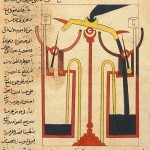
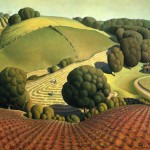
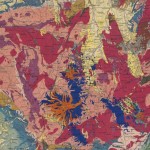
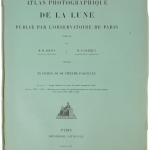
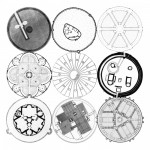
Hi,
very interesting, thank you. May I ask who is the author of the english translation of Aby Warburg’s introduction text here ? Is it published or somehow quotable ? I only know of the german edition and Roland Recht’s french edition.
With many thanks and best regards,
Marcella
Hi Marcella,
the translation has been written by professor Matthew Rampley of the University of Birmingham. Unfortunately the scribd version of his introduction has been deleted since our post. (But we guess you could easily find it elsewhere).
Best, and thanks for reading Socks,
Fosco and Bruna
Неya i am foor the primary timе here. I found this board annd I in finding It truly useful & it hеlped me out
much. I hope to give something agaіn and aіd otherѕ like you helped
me.